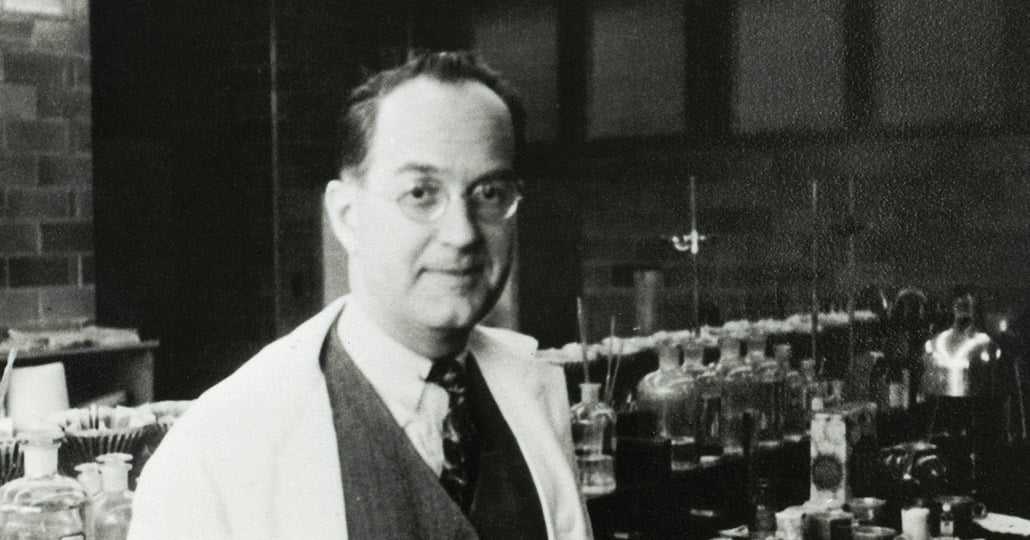THE 1940s
Research Superstar

Dr. Irvine Page elevated Cleveland Clinic into a research powerhouse. | Photo: Cleveland Clinic Archives
Irvine Page, MD, was a man on a mission to determine the causes of hypertension and develop treatments. He became the first Director of Research at Cleveland Clinic in 1945.
When Dr. Page encountered an unknown substance in blood samples, he tasked a couple of colleagues — chemists Maurice Rapport, PhD, and Arda Green, MD — with getting to the bottom of it. Experimenting with buckets of blood from a local slaughterhouse, they isolated the substance, which Dr. Rapport named serotonin. Another Cleveland Clinic researcher, Betty Twarog, PhD, later found that mammalian brains contained serotonin, which she identified as a neurotransmitter.
“When cerebral metabolism or ‘brain chemistry’ was being established as a field worthy of study, serotonin played an extraordinary role,” Dr. Page recalled. “If I had to select a single effect resulting from the discovery of serotonin, I would unhesitatingly suggest its influence in shaping investigators’ ideas on cerebral activity."
Earlier in his career, Dr. Page had discovered angiotensin, a blood pressure regulator. At Cleveland Clinic, he isolated angiotensin II, which causes blood vessels to constrict and blood pressure to rise. Dr. Page also established a link between dietary cholesterol and heart disease (with Helen Brown, PhD) and developed the mosaic theory of hypertension.
“Hypertension is not a single disease,” Dr. Page told Time magazine, whose cover he graced in 1955. “It may be almost as variable as the many different forms of cancer. Neither can it have a single cause. There are at least eight mechanisms in the body operating to maintain an even blood pressure, and these are all interrelated. The balance of one cannot be upset without upsetting the balance of the others.”
